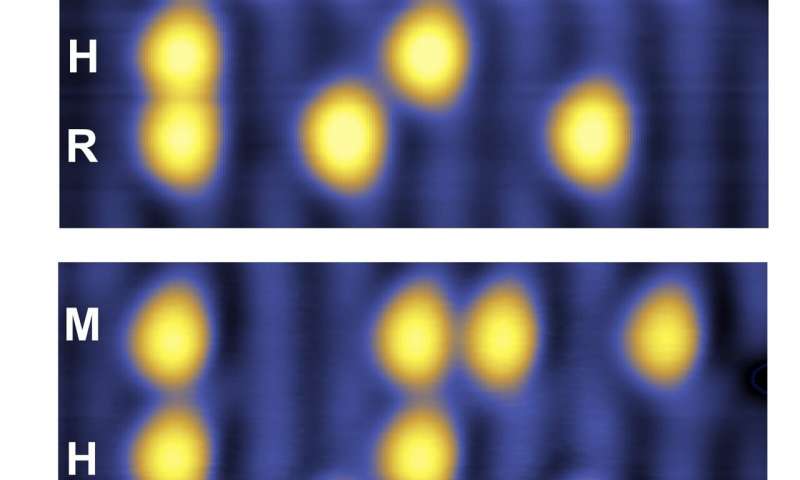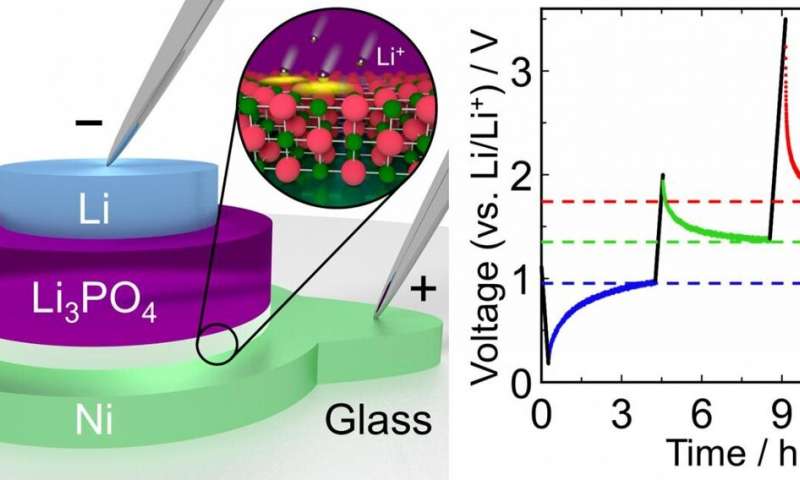
A review of single molecule-based electronic devices (02/12/2019)
In a
paper to be published in the forthcoming issue of Nano, a group of
researchers from the Shenyang Jianzhu University in China has provided an
overview of single-molecule electronic devices, including molecular electronic
devices and electrode types. They also describe future challenges to the
development of electronic devices based on single molecules in the hopes of
attracting more experts from other fields to participate in this research.

Molecular eraser enables better data storage and computers for AI (02/12/2019)
Scientists
have added a crucial tool to the atomic-scale manufacturing toolkit with major
implications for today's data driven—carbon intensive—world, according to new
research from the University of Alberta in Canada.

Electro-optical device provides solution to faster computing memories and processors (02/12/2019)
The
first ever integrated nanoscale device which can be programmed with either
photons or electrons has been developed by scientists in Harish Bhaskaran's
Advanced Nanoscale Engineering research group at the University of Oxford.

Small, fast, and highly energy-efficient memory device inspired by lithium-ion batteries (02/12/2019)
Scientists
at the Tokyo Institute of Technology (Tokyo Tech) and the University of Tokyo
(UTokyo) have developed a new three-valued memory device inspired by solid lithium-ion
batteries. The proposed device, which has an extremely low energy consumption,
may be key for the development of more energy-efficient and faster
random-access memory (RAM) components, which are ubiquitous in modern
computers.

Additive manufacturing and Ni/Ti metal bolster cooling technology (02/12/2019)
Scientists
at the University of Maryland (UMD) have developed a novel elastocaloric
cooling material, comprised of a nickel (Ni)-titanium (Ti) alloy and sculpted
using additive technology, that is highly efficient, eco-friendly and easily
scaled-up for commercial use. The study was published in the journal Science on
November 29.

Production of recyclable plastic a step closer (02/12/2019)
A
recently discovered group of recyclable plastics seems to be a promising
alternative to the hard plastic that is difficult to recycle. However, we are
not yet seeing these so-called vitrimers used in products because they are
difficult to process. Researchers at Eindhoven University of Technology
discovered that the processability of this new form of plastics is influenced
not only by the temperature but also by the density. Such insights should lead,
among other things, to recyclable dashboards for the automotive industry. These
results were published yesterday in the journal PNAS.

Building a better battery with machine learning (01/12/2019)
Designing
the best molecular building blocks for battery components is like trying to
create a recipe for a new kind of cake, when you have billions of potential
ingredients. The challenge involves determining which ingredients work best
together—or, more simply, produce an edible (or, in the case of batteries, a
safe) product. But even with state-of-the-art supercomputers, scientists cannot
precisely model the chemical characteristics of every molecule that could prove
to be the basis of a next-generation battery material.

Stretchable, highly conductive film promising for wearable electronics (01/12/2019)
Strong
bonds between metal nanowires and polymer nanofibers enable a composite film to
realize good electrical conductivity and high stretchability.

Making tiny antennas for wearable electronics (29/11/2019)
When
it comes to electronics, bigger usually isn't better. This is especially true
for a new generation of wearable communication systems that promise to connect
people, machines and other objects in a wireless "internet of
things." To make the devices small and comfortable enough to wear,
scientists need to miniaturize their components. Now, researchers in ACS
Nano have made the tiniest radio-frequency antennas reported yet, with
thicknesses of about 1/100 of a human hair.

Rational transparent conductor design provides a boost to carbon nanotubes application (28/11/2019)
An
international team of scientists led by researchers from the Laboratory of
Nanomaterials at the Skoltech Center for Photonics and Quantum Materials (CPQM)
has rationally designed a novel p-type flexible transparent conductor using
single-walled carbon nanotubes. This opens new avenues for its applications in
next generation opto-electronics and energy technologies. The results of the
study were published in Nano Energy.









